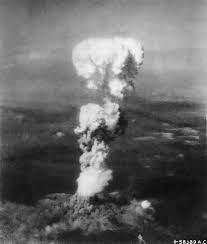
The Significance of Hiroshima
On August 6, 1945, Hiroshima became synonymous with the devastation of nuclear warfare when the United States dropped the first atomic bomb on the city, leading to catastrophic loss of life and unprecedented destruction. Today, Hiroshima stands not just as a memorial of tragedy but as a testament to human resilience and the quest for peace, making it a critical subject for discussion and reflection.
Commemorating the Past
Each year, the city hosts the Hiroshima Peace Memorial Ceremony, drawing thousands of visitors from around the world to pay their respects and reflect on the consequences of war. In 2023, the ceremony welcomed survivors, known as hibakusha, who shared their stories, fostering a deeper understanding of the historical context and its implications for peace in the modern world. This year marked the 78th anniversary of the bomb’s detonation, and attendees highlighted the need for continued advocacy against nuclear proliferation.
Efforts in Peace Promotion
Hiroshima has become a global advocate for peace, with initiatives aimed at promoting disarmament and preventing future conflicts. The Hiroshima Peace Memorial Park serves as a focal point for these efforts, housing numerous monuments and museums that educate visitors about the horrors of nuclear warfare while promoting the message of peace. The city’s mayor, Kazumi Matsui, recently urged governments worldwide to take action towards disarmament in his annual peace declaration, emphasizing that the suffering experienced in Hiroshima should never be forgotten.
Looking Toward the Future
The legacy of Hiroshima is one of transformation. The city, originally rebuilt after the war, is now a thriving urban center known for its innovative technology, vibrant culture, and a commitment to peace. The efforts of the local government, civil society, and international organizations in memorializing the past while fostering a culture of peace highlight the importance of community solidarity. Young people, especially, are being galvanized through educational programs encouraging them to understand the significance of Hiroshima’s history and the vital importance of peace.
Conclusion
The story of Hiroshima is not merely one of destruction; it is a narrative of resilience, renewal, and a bold vision for peace. As the world grapples with ongoing geopolitical tensions and the threats posed by nuclear weapons, the lessons learned from Hiroshima resonate more than ever. By continuing to prioritize education, advocacy, and remembrance, we can ensure that the sacrifices made by those who suffered in 1945 are honored, and that the mission for global peace remains paramount.




